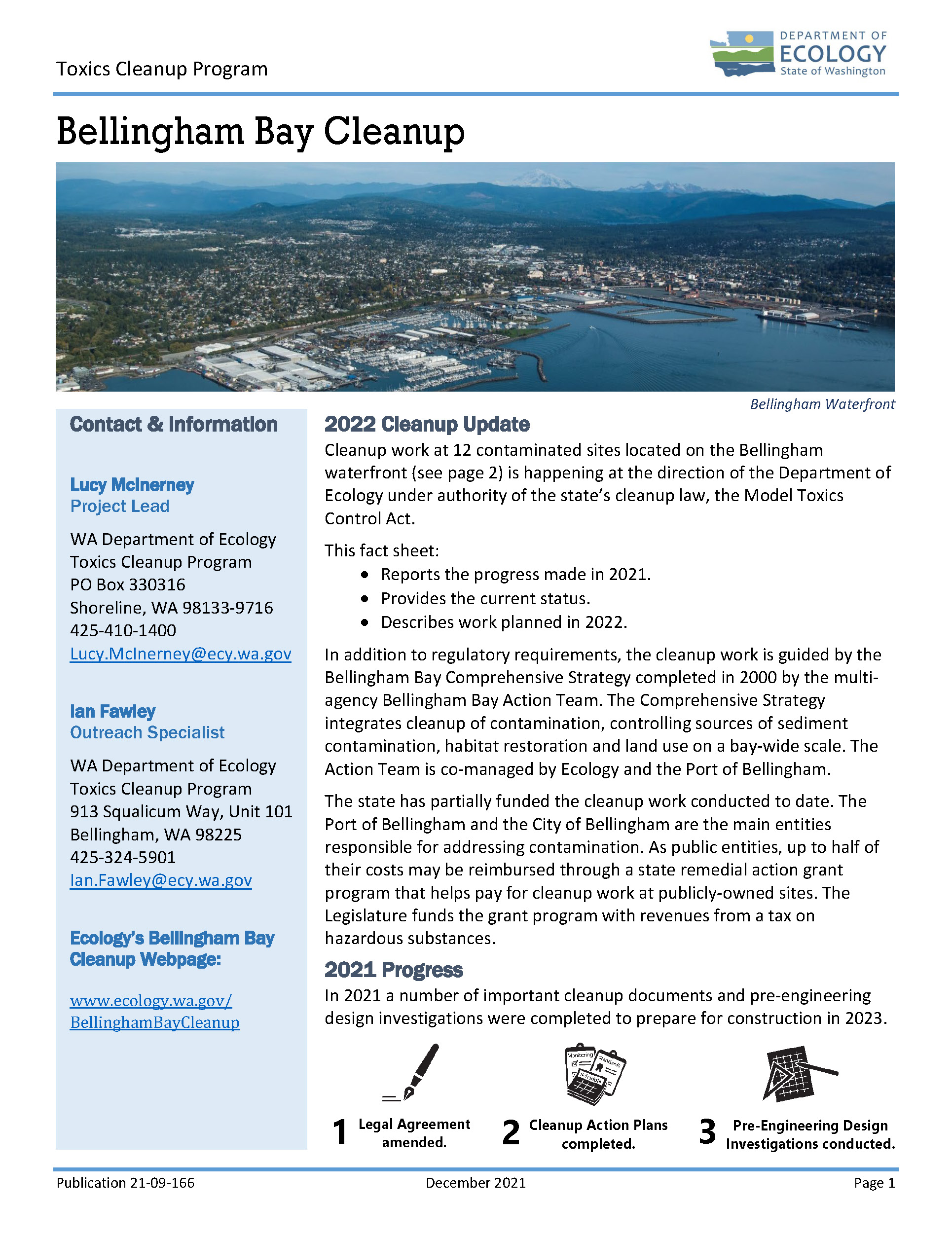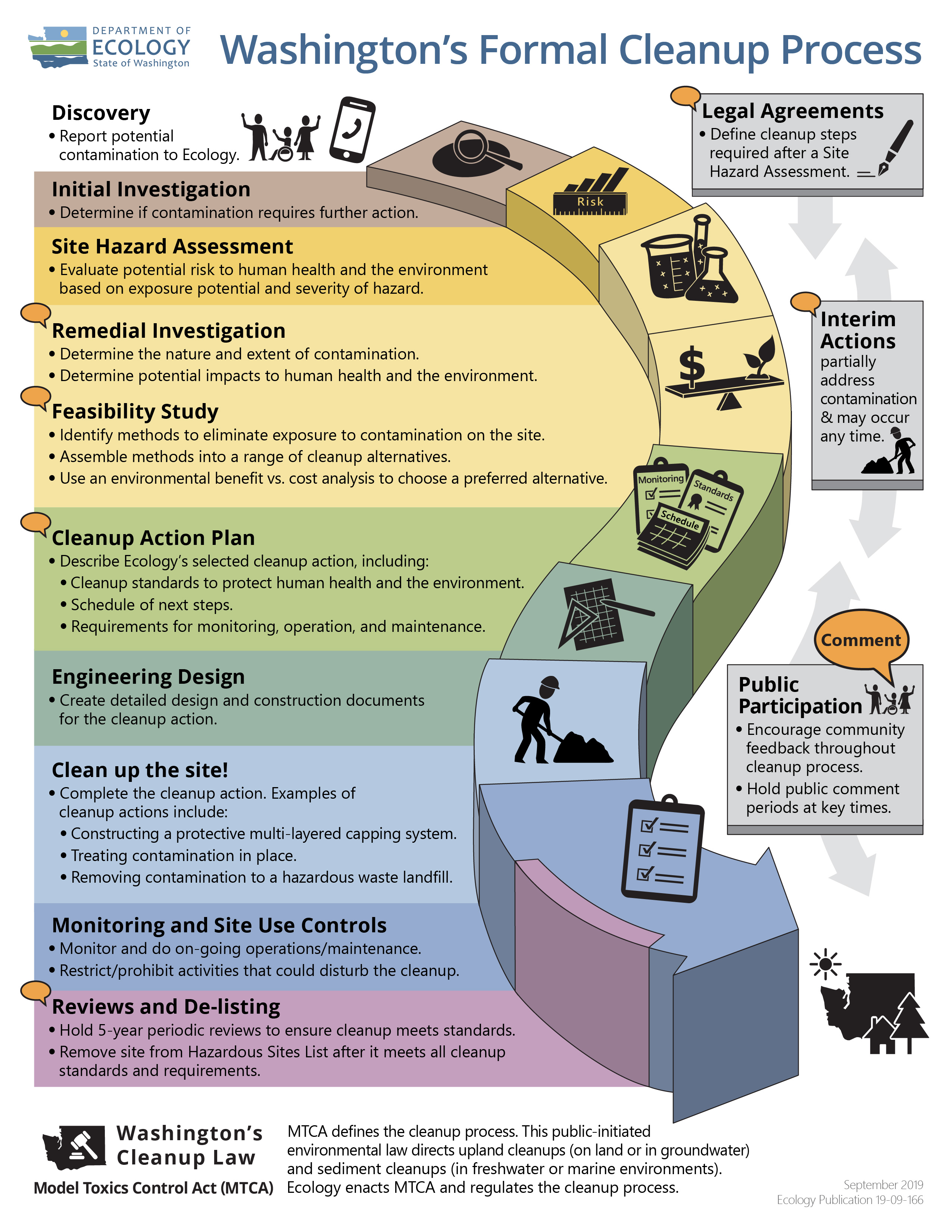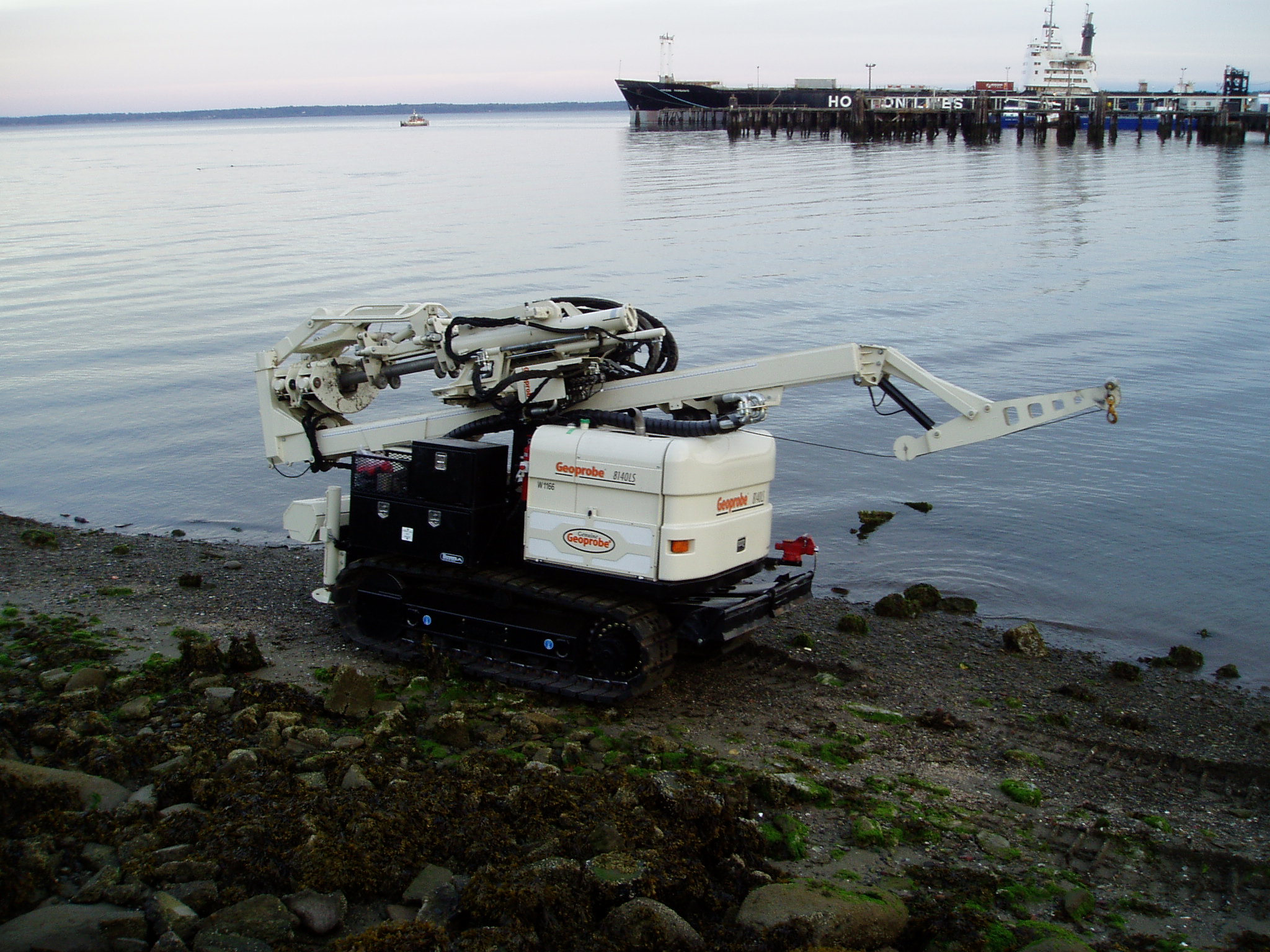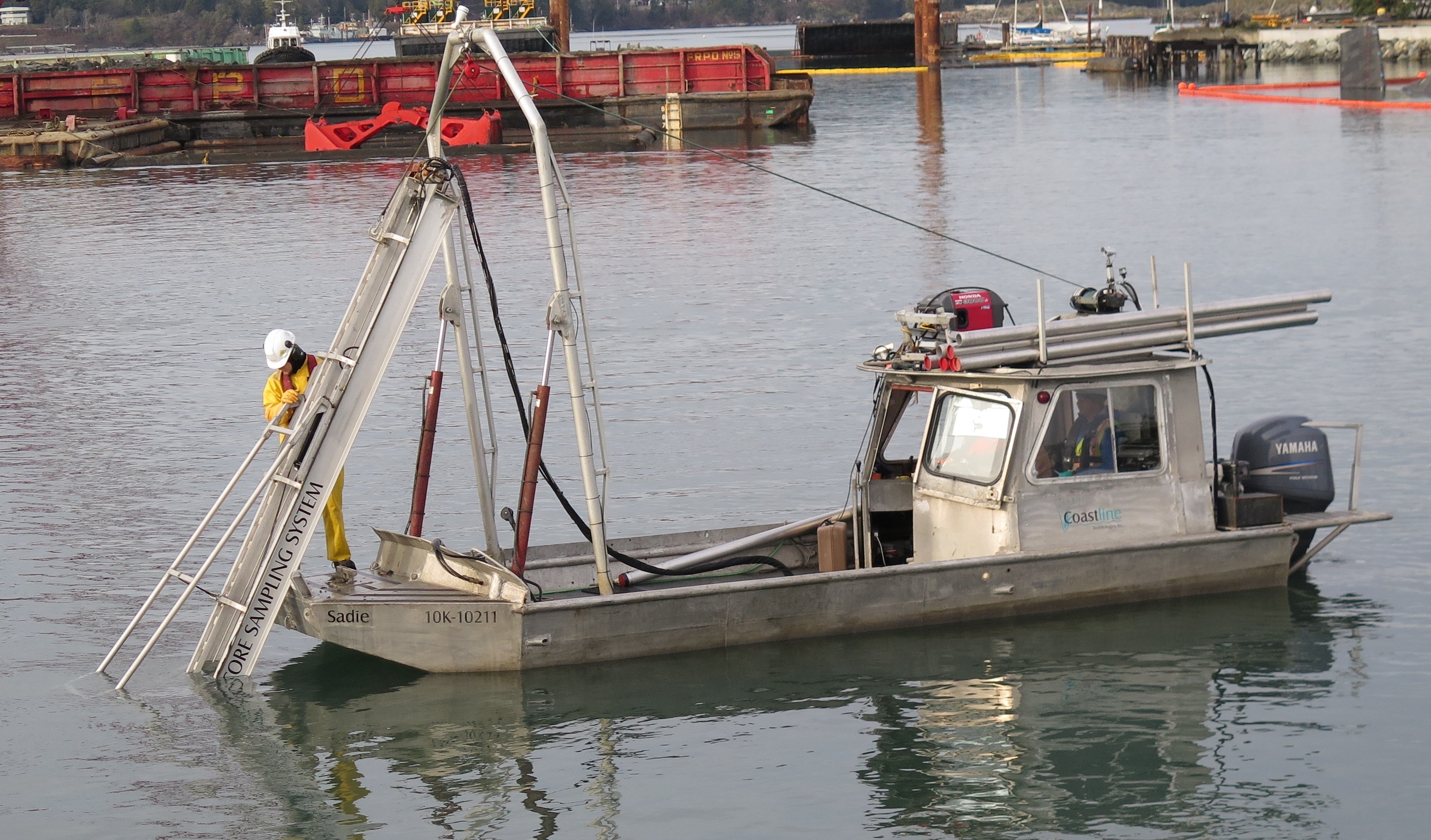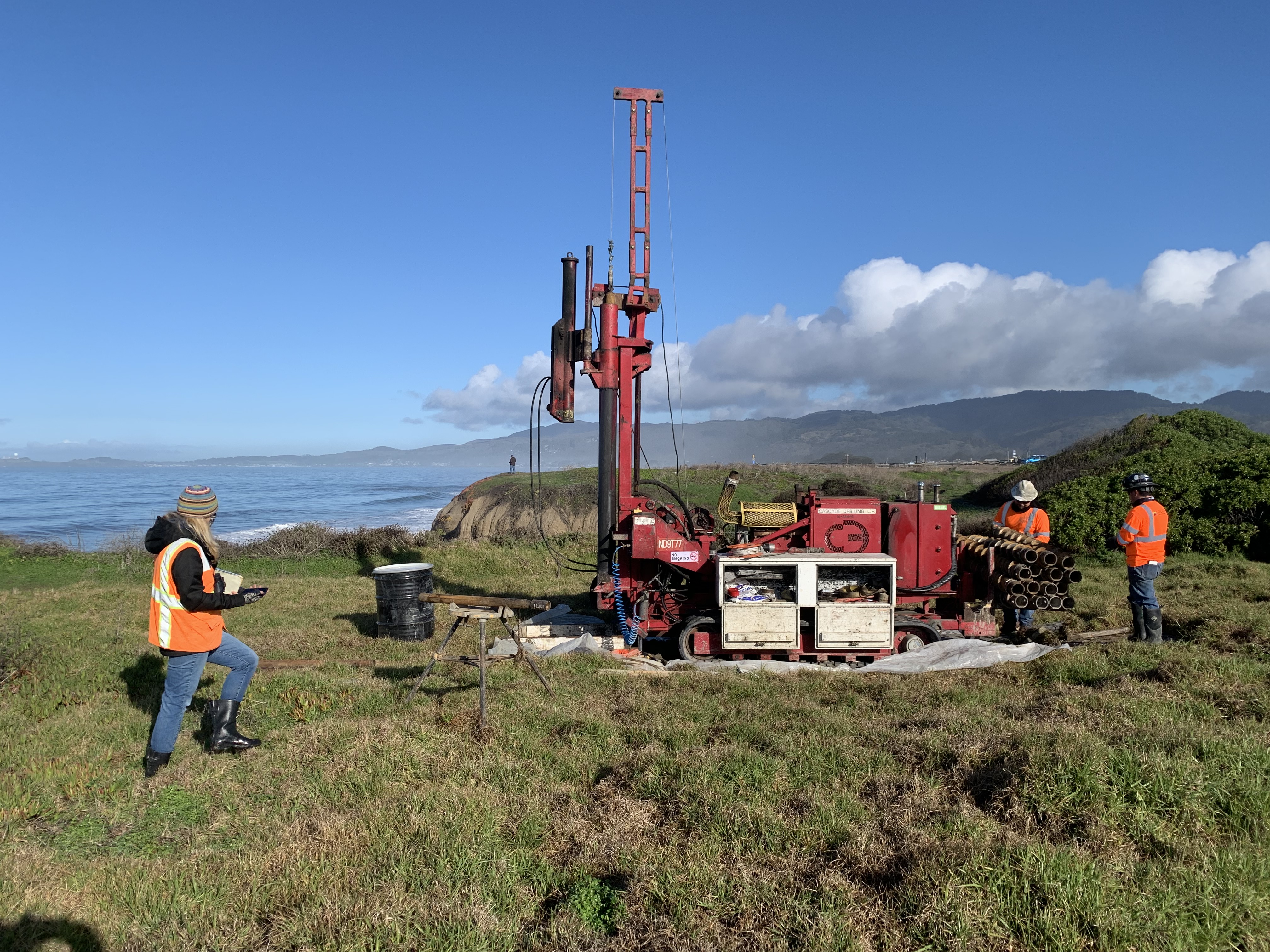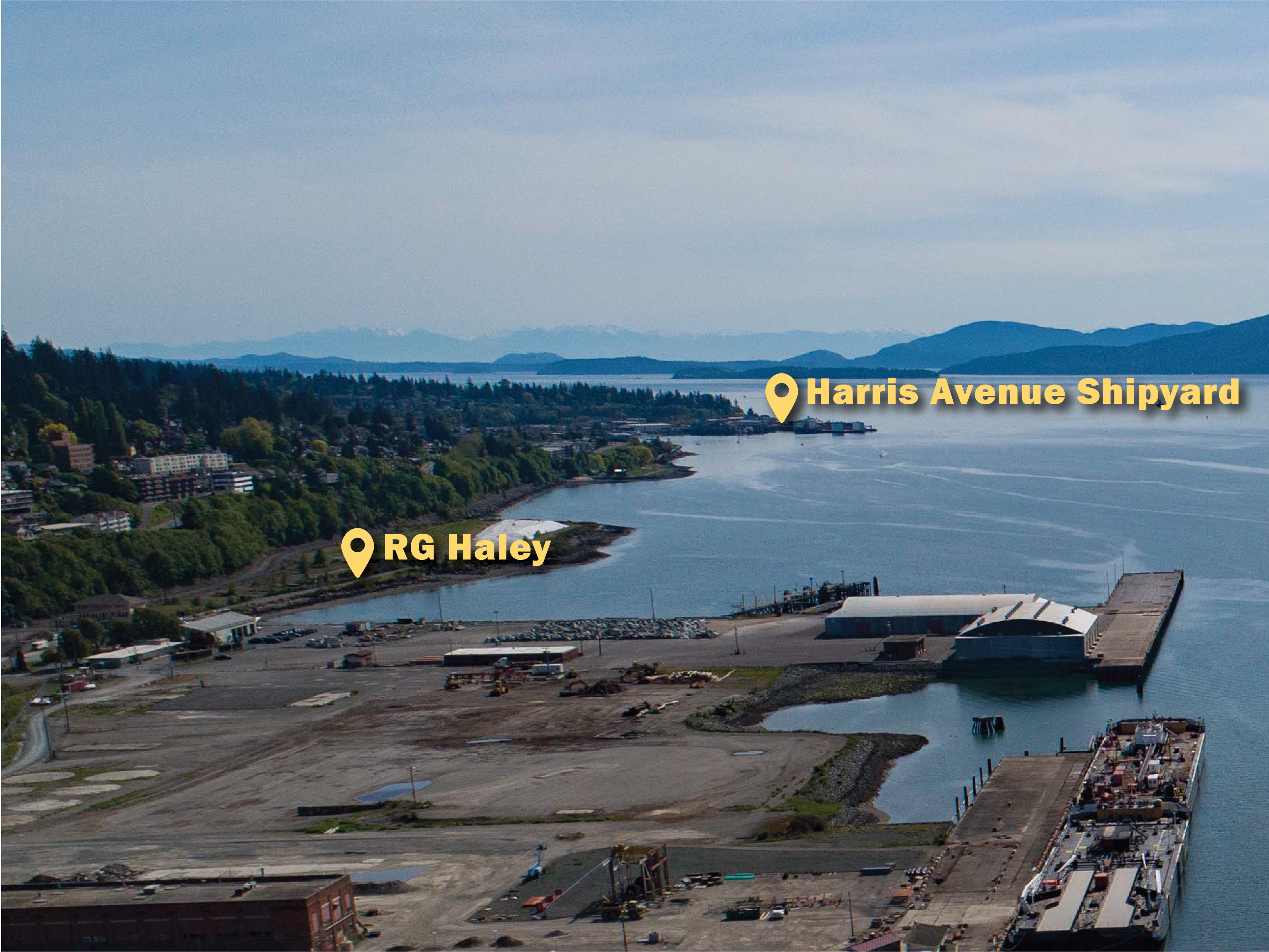
View of Bellingham waterfront and locations of more cleanup site fieldwork, May 2019
Ecology is cleaning up Bellingham Bay one site at a time. This year you’ll see fieldwork at TWO sites!
Bellingham Bay 2022 Cleanup Update Fact Sheet
Starting this spring and continuing through the summer, you’ll see environmental contractors at both sites collecting soil, groundwater, and sediment samples for testing to help inform the engineering design.
You may have noticed similar crews on the waterfront the past two years. They’ve been busy doing this type of fieldwork throughout Bellingham Bay as we prepare for final cleanups at other sites. See our stories about our other waterfront cleanup sites: I & J Waterway, Whatcom Waterway, Central Waterfront, and South State Street MGP.
New waterfront park vision
Two sites: same cleanup goal but different land uses
Both the RG Haley and the Harris Avenue Shipyard sites are now nearing the final steps of Washington’s formal cleanup process, guided by the state’s environmental cleanup law.
What happens to the sites when contamination is addressed?
The City of Bellingham is planning a new waterfront park on the RG Haley site that will also include the neighboring Cornwall Avenue Landfill site.
Harris Avenue Shiypard in Bellingham's Fairhaven neighborhood, October 2019
Through April 29, you can help the city name this new park.
For the Harris Avenue Shipyard site, the Port of Bellingham continues to manage this working waterfront for marine trades. In 2021, the port welcomed a new tenant to the property.
Where are these sites in the cleanup process? And what happens next?
Steps in WA's formal cleanup process
To complete design, additional fieldwork — called a pre-remedial design investigation — is necessary.
The city and port are conducting this fieldwork, at their respective sites, under legal agreements (called Agreed Orders) with Ecology.
The engineering design for the RG Haley cleanup should be completed by 2023, with cleanup work expected as early as 2024.
For the Harris Avenue Shipyard upland cleanup, the engineering design should be completed later this year with cleanup starting in 2023. The engineering design for the in-water cleanup should be ready by 2024-2025 with cleanup starting in 2025.
What will I see happening at the RG Haley site?
Shoreline sediment sampling
We have gathered enough data for the RG Haley site’s upland engineering design. Now crews need to sample sediment along the shoreline to inform the in-water engineering design.
Example of sonic drilling machine
As part of this pre-remedial design investigation work, crews will sample sediment and porewater (water contained within the sediment) using hand-held coring and probing methods such as sonic drilling. This work will determine if non-aqueous phase liquid (NAPL or petroleum products that don’t dissolve or mix with groundwater) is present and will provide information for the design of the ‘cap,’ a clean sand layer to isolate and/or treat contaminants.
Crews will also sample an existing cap to learn how it has performed. This testing will inform cap design for the rest of the in-water cleanup.
What will I see happening at the Harris Avenue Shipyard site?
Keeping a working waterfront... working
In-water sediment sampling at Harris Avenue Shipyard
Coordination of this site’s pre-remedial design investigation is a perfect example. The in-water investigation will be completed later this spring and summer during an approved time to work in the water. The upland investigation is waiting until environmental crews can access the site and limit the impact to the tenant’s operations.
In-water investigations
The boat-based fieldwork was completed earlier this year. Crews surveyed in-water conditions, identified utilities, and developed estimates for the amount of sediment to be dredged.
Crews collected surface sediment using grab sampling and subsurface sediment using a vibracore (a hollow tube vibrated into the sediment to collect a continuous sediment sample across varying depths). These sediment samples will refine the planned in-water dredging and capping design as well as help evaluate an earlier partial cleanup action to determine if any additional cleanup is needed.
Example of vibracore sampling vessel
Dive crews also went underwater to survey the seafloor, including underwater utilities and debris locations.
Later this spring and summer, contractors will also conduct underwater surveys of eelgrass and other large aquatic plants (macroalgae) using towed video and diver observations. These surveys will help us understand how the dredging part of the cleanup may affect eelgrass.
Upland investigations
Example of upland soil boring equipment
Crews will also investigate soil, groundwater, and tidal effects on groundwater. Soil borings will help locate the extent of contamination. Groundwater monitoring will determine if bioremediation (a process to enhance the natural breakdown of contaminants) is necessary.
Funding
The city and port are eligible for reimbursement of up to half of their costs from Ecology through the state’s Remedial Action Grant Program, which helps pay for the cleanup of publicly-owned sites. The Legislature funds the grant program with revenues from a tax on hazardous substances.
Cleaning up Bellingham Bay
The RG Haley and Harris Avenue Shipyard sites are two of 12 Bellingham Bay cleanup sites coordinated through the Bellingham Bay Demonstration Pilot. The pilot is a bay-wide multi-agency effort to clean up contaminated sediment, control sources of sediment contamination, and restore habitat, with consideration for land and water uses. In 2000, participants in this initiative developed the Bellingham Bay Comprehensive Strategy.


